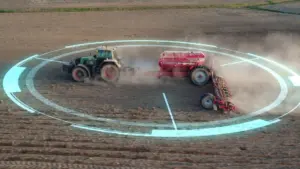How NASA Used Automation to Bring InSight Lander to Mars
On Nov. 26, NASA successfully grounded the InSight Lander on the plains of Elysium Planitia on Mars. The goal is to study the interior of Mars, including its crust, mantle, and core as well as to understand the formation and evolution of Mars. The mission will also seek to discover tectonic activity and meteorite activity rate on the planet. The lander is designed to provide data for almost two Earth years (one Martian year).
The Mars lander is powered using solar power. After the dust settled from the landing, the solar array deployed and unfolded. It is also equipped with a robotic arm whose job it is to both deploy the scientific instrumentation and to provide 3D photographs of the landing area. The instruments are very sensitive and must be deployed carefully. This is the first time a robotic arm has been used to do this. The instruments being deployed have been built in the U.S., Germany, and France, showing the degree to which this is a truly international project.
Given NASA’s goal of sending human beings to Mars in the near future, meaning there will have to be facilities already there for the astronauts to work and live in, this data has more than just pure scientific value. The more that is understood about the planet, both inside and out, the more likely a manned trip to Mars will be.
Printing our way to Martian facilities
If you are wondering how it is that there can be facilities on Mars waiting for astronauts, when surely one would need someone there to build the facilities, NASA already has a solution: 3D printing. After running a contest to find the best 3D printing solution to create a Martian habitat, NASA has recently declared five winning entries.
Of course, NASA is hardly the only institution trying to put people on Mars. In the private sector, Elon Musk’s Space X is also actively trying to create the conditions for a successful trip to Mars that is designed to result in the establishment of a successful Mars colony. This means the company will need to develop the kind of infrastructure necessary to make such a colony succeed. Most likely it will have to rely on 3D printing for initial infrastructure so it will be ready for use when people arrive. This process will have to be automated.
On Mars as it is on Earth
Much of the infrastructure that would have to be built would be Martian equivalents to what we have here on Earth. Much of this construction equipment will have to be light, small, and automatic. It will have to fit on rockets and because radio waves can take between four and 24 minutes to reach Mars from Earth, any machines will need to be as fully autonomous as possible.
These preparations for Mars will not only help us to live on Mars, but will also benefit us here on Earth. Three-dimensional printers to build structures, fully autonomous machines, and smaller, lighter equipment are all critical to the future of Earth but also the establishment of viable and sustainable operations on the red planet. So, if you’re excited about technological innovations that will help us here on Earth, you should be very excited about our plans for a future on Mars.
For the latest news, videos, and podcasts in the Science Industry, be sure to subscribe to our industry publication.
Follow us on social media for the latest updates in B2B!
Twitter – twitter.com/ScienceMKSL
Facebook – facebook.com/marketscale
LinkedIn – linkedin.com/company/marketscale







